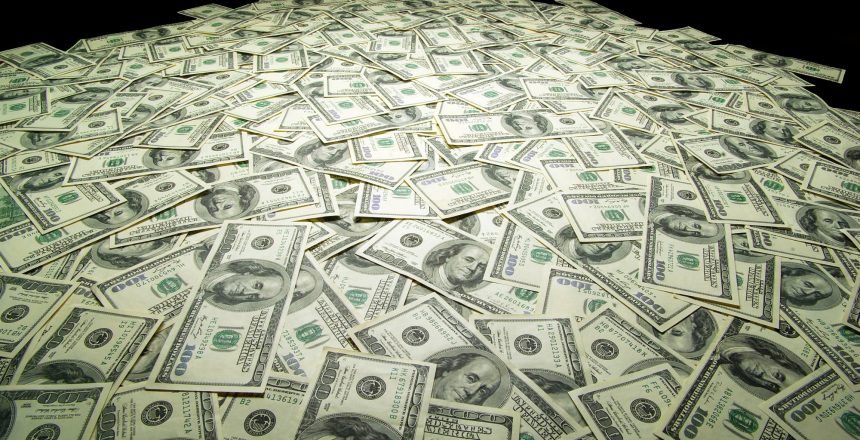As a savvy real estate investor, you should definitely be familiar with how to calculate cash on cash return. Knowing how to accurately determine cash on cash return for a property can give you a lot of useful insights. But what are its drawbacks, if any? And how does cash on cash return stack up with other metrics like net operating income, return on investment, or capitalization rate?
Knowing the answers to these questions will certainly give you a leg up when searching out commercial real estate deals. Cash on cash return is the ultimate “back of the napkin” calculation for real estate investments mainly because it can be done rapidly and provides strong insight into a property’s cash flow.
What is cash on cash return?
Cash on cash return is a formula often used in commercial real estate which gives insight into the cash flow of a property. It is one of many metrics that should be used to determine whether or not to invest in a property. How to calculate cash on cash return is a fundamental skill for investing in commercial real estate.
How do you calculate cash on cash return?
Cash on cash return is calculated as follows:
Annual pre-tax cash flow / Actual cash invested
This is expressed as a percentage such as 8% or 10%.
Annual pre-tax cash flow is determined by the following formula:
(Total rental income + Any additional income) – (Operating expenses + debt service)
Total rental income. This is the total amount of rent collected for the year. If you are analyzing a property you don’t own, you would take the monthly rental income multiplied by 12, then subtract the vacancy rate. If the vacancy rate is unknown, you would need to estimate it. For example If a property brought in $50,000 a month ($600,000 a year), with a 10% vacancy rate, the rental income would be $45,000 a month. Multiplying by 12 would give a rental income of $540,000.
Any additional income. Additional income includes fees collected for parking, utility fees, maintenance fees, or any other income collected by the property.
Operating expenses. This would include all other expenses for the property. Insurance property taxes, maintenance, employees (such as the manager), and bank fees, would all be counted here
Debt service. The debt service on the property is the amount of money owed each month on any loans, including interest. Most commercial real estate is purchased using debt, so this must be factored into the cash on cash return.
Actual cash invested is a sum of the following:
Down payment. This is the amount of money paid upfront in order to obtain the loan.
Closing costs. Any costs paid when you close on your loan (broker fees, property inspection fees etc.) are part of your invested cash.
Pre-rental improvements. Anything you invest in the property before renting it out, such as fixing the roof or redoing the parking lot, counts as part of your initial investment.
Real World Example of Cash on Cash Return Calculation
We will use the example here of an office building for sale to show you exactly how to calculate cash on cash return. The first thing you need to figure out is the total maximum yearly rental income. To get this you would multiply the number of units by the monthly rent, then multiply by 12.
Number of units: 10
Monthly rental price per unit: $8,000
Maximum yearly rental income = 10 x $8,000 x 12 = $960,000
This would be the rental income if all 10 units were occupied all year. You decide to estimate conservatively and calculate for a 90% occupancy rate (10% vacancy rate). This gives you the estimated yearly rental income.
Estimated yearly rental income = $960,000 x .90 = $864,000
Now add any additional income for the property. This data could be obtained from the previous owner, however you may want to add or subtract additional fees, so be sure to include all additional income in this step.
Additional yearly income:
Tenant parking fees: $10,000
Tenant utility fees: $26,000
Adding this $36,000 to your estimated yearly rental income of $864,000 you get $900,000
Then, to obtain your annual pre-tax cash flow, subtract operating expenses and debt service from the total estimated income.
Expenses and debt:
Annual debt service: $600,000
Annual operating expenses: $140,000
Annual pre-tax cash flow: $900,000 – $600,000 – $140,000 = $160,000
Now all you need to do is figure out how much actual cash you are going to invest. To do this add up your down payment, closing costs and pre rental improvements.
Down payment: $3,000,000
Closing costs: $150,000
Pre-rental improvements: $50,000
Actual cash invest: $3,000,000 + $150,000 + $50,000 = $3,200,000
Cash on cash return is simply pre-tax annual cash flow divided by actual cash invested, which gives you:
Cash on cash return: $160,000 / $3,200,000 = 5%
What is a good cash on cash return?
Alright, so in the previous example we calculated a cash on cash return of 5%, but is that good? Well to answer that, first you need to understand what this percentage is telling you.
Essentially cash on cash return tells you how much of your initial investment you will make back in the first year. So a 5% cash on cash return means you will gain back 5% of your initial investment in the first year. In order to know if this is good, you would need to know your goal for the property. Are you looking to sell it in five years or ten years? Or are you thinking about holding onto it for longer?
Some investors want a high cash on cash return because they want as much cash flow as possible from the beginning. Others might accept a lower cash on cash return if they believe the value of the property will appreciate over the years. To know what is good for cash on cash return, you need to know what your goals are.
As an example let’s look at an area like Georgetown in Washington DC. Land value here is very secure, and when investing in an area like this, you could expect long term appreciation. So a lower cash on cash return of 6% or even less would be acceptable. But as a comparison, say you were investing in Baltimore, Maryland. You could see a better cash on cash return of 9% or more, but the land value there is not as secure and appreciation may not be as good.
So there really is no exact answer to “what is good” for a cash on cash return. That’s because cash on cash return is a useful, but very limited metric. It is one of many tools a good investor should know. To understand what is good for your unique situation, you would also need to understand what cash on cash return leaves out in its analysis.
What are the limits of using cash on cash return for analysis?
Cash on cash return is an extremely useful calculation for investors, especially since the formula is rather simple and quick to do. However, there are a number of factors which it does not take into account.
It leaves out taxes. Cash on cash return does not take taxes into account at all. Each investor is going to be in a different tax bracket and have different deductions he can make. And sometimes an investor doesn’t know exactly what his tax situation is going to look like until the end of the year. Obviously taxes are going to affect the overall profitability of an investment, so realize that cash on cash return leaves this factor out.
It doesn’t account for appreciation. Cash on cash return is basically how much money you are going to make back in the first year. But that does not factor in how much you might sell the property for in five to ten years. Since appreciation and future sale price are both a part of an investment, realize cash on cash return leaves these out.
It doesn’t take into account your equity. When you make payments on your loan, a certain percentage of that payment goes toward interest and a certain percentage goes toward the principal. Every time you pay down the principal loan amount, you now own more equity in the property. So in the long term, assuming you were to sell the property, the part of your payment which pays down the principal is not really an expense since it’s being converted into equity in the property. Cash on cash return leaves this factor out.
Comparing Cash on Cash Return to Other Metrics
It’s important to understand the difference between cash on cash return and some other common metrics in real estate. Here are a few key comparisons:
Cash On Cash Return Vs. NOI (Net Operating Income)
NOI is the total amount of yearly income for your property. This is a total dollar amount as compared to cash on cash return which is a percentage. NOI is just how much money the property makes in a year, while cash on cash return compares the first year’s income to the initial investment.
Cash On Cash Return Vs. Cap Rate (Capitalization Rate)
Cap rate would be the same as cash on cash return if you paid for the property 100% in cash. Cap rate is calculated by taking the net operating income and dividing by the purchase price of the property. So a property you paid $500,000 for which provided $50,000 in income after the first year would have a cap rate of 10%. Cap rates do not take into account financing an investment.
Cash on cash return vs ROI (Return On Investment)
ROI is a calculation which looks at the total lifespan of the investment. It’s a percentage which tells you how much money you made on your initial investment by taking your total profit and dividing it by your initial investment. For example if you invested $1,000,000 in a property, and after five years made a profit of $2,000,000, your ROI would be 200%. ROI is a long term calculation while cash on cash return is only looking at the first year.
The Bottom Line on Cash on Cash Return
Knowing how to calculate cash on cash return is an essential part of investing in real estate. While this metric does not tell you everything you need to know about a property, it’s definitely worth doing. It can be done rapidly which is an advantage especially when analyzing a large number of potential deals. If you know exactly what its limits are, then you won’t get into trouble with it, and can use it effectively.




